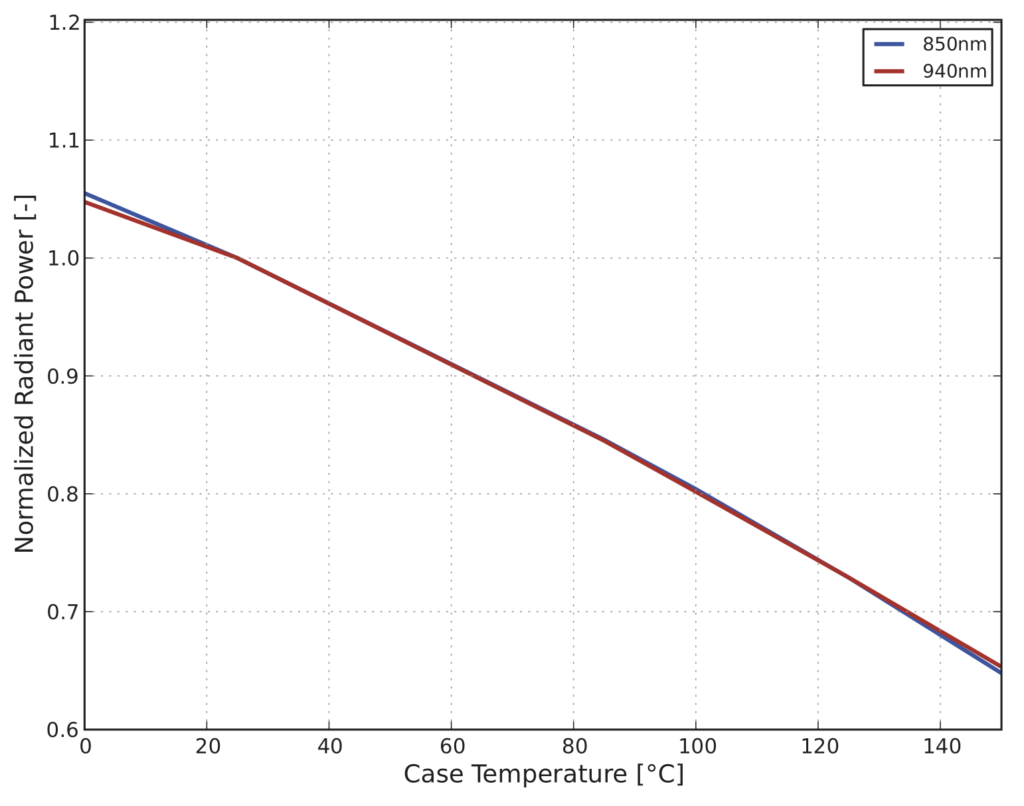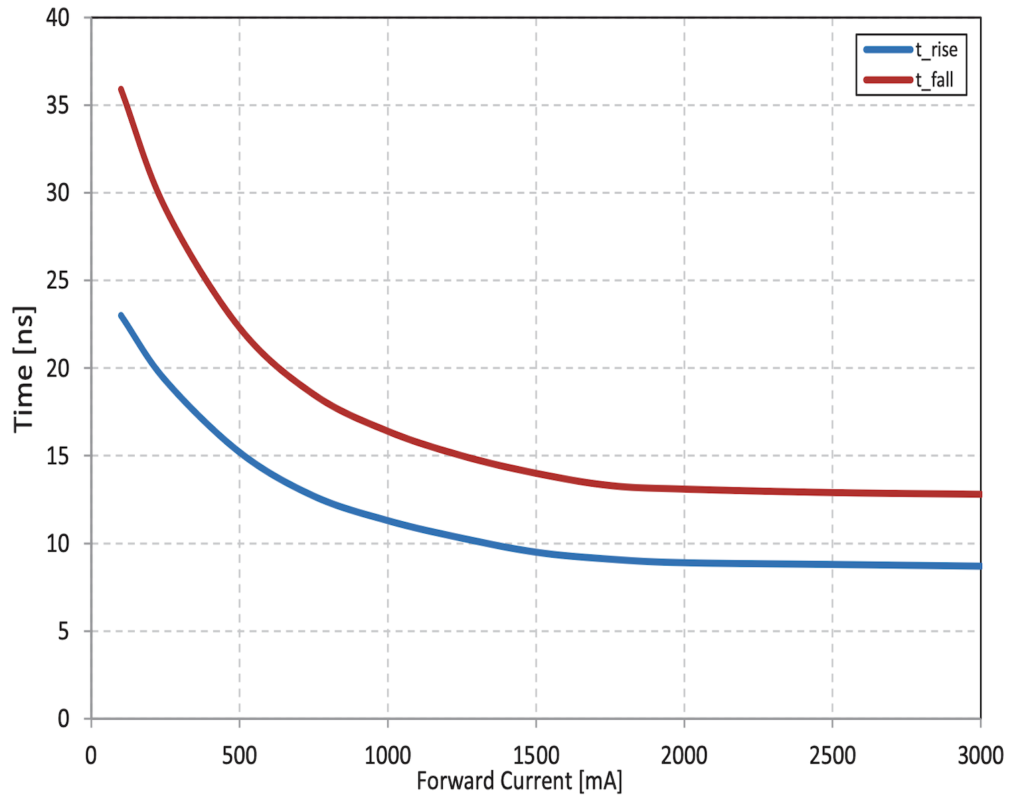Illumination
Due to high illumination power, significant heat generation by the illumination warms up not only the illuminator, but the whole camera. Thus, good thermal management is key. Heat dissipation is required to keep the illumination as cold as possible. It is to note, that the illumination power decreases significantly with higher temperature. The radiance of the LED in Figure 1 drops by 20% from room temperature to 100°C (junction) which reduces the operating range of the TOF camera at hight temperature. It is also to note, that the rise and fall time of LEDs
is current dependent, shown in Figure 2. The lower the current, the longer the rise and fall time. A variation in rise or fall time generates a significant distance shift. In the example shown in Figure 2, the change of rise/fall time is approx. 18ns betweena current of 100 and 3000mA. Without extra calibration and compensation, a distance shift of 2.7m can be observed! This is really significant.


Rules of thumb:
- A good thermal management of the illumination is key.
- When operating the camera with different LED currents, a separate calibration with at least offset compensation is required.
- Constant illumination power during the whole measurement cycle is key.
- Make sure that the illumination covers the required field of view, but not more.
- The modulation waveform is not important because 4th order harmonics or other effects are calibrated and compensated during runtime.
